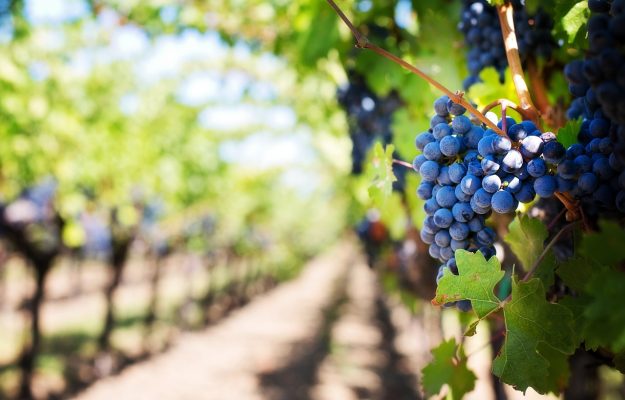First in terms of export values, the wine supply chain exceeds 1.5 billion euros in the first quarter of 2023 (+5%), with the largest contribution from the Prosecco district of Conegliano-Valdobbiadene (+12.6%) and the wines of the Langhe Roero and Monferrato (+4.4%), which is 20 million more than the result for the same period in 2022. There was a slight decline in the Veronese Wines district (-1.7%) and for the Florentine Hills and Sienese Hills Wines district (-1.6 %). Here are the figures from the Monitor of Italian Agrifood Districts (updated to March 31, 2023), edited by the Intesa Sanpaolo Research and Studies Department, which show that the overall exports of the Italian agrifood sector still show a robust growth trend (+9.5%), with the 51 districts totaling more than 6.6 billion in exports during the quarter. Significant is the contribution of the processed food sector, whose supply chains grew by 15.4% in the first quarter of 2023.
Looking at the markets, Germany is confirmed as the leading trade partner for the products of the agri-food districts in the first quarter of 2023: the slowdown in the German economy does not reduce export flows to this market (+13%), which mainly buys agricultural products (+5.6%), wines (+12.8%) and canned goods (+22.9%). This is followed by the United States (+9%), which, in addition to wines (+4.4%), showed appreciation for pasta and sweets (+30%) and oil (+19.2%). Third destination is France (+16.9%), which buys mainly pasta and sweets (+4.3%), dairy products and cheeses (+20.3%) and meats and cold cuts (+23.9%). Sales to the United Kingdom also continue to grow (+16.7%), especially pasta and pastries (+30.9%) and canned goods (+42.3%). Slightly positive is the balance towards emerging economies (+3%), which account for 20% of total agri-food district exports: despite declines to Russia (-13.4%) and China (-13.1%) positive changes in the first quarter of 2023 were recorded by Poland (+18.5%), the Czech Republic (+5.5%), Romania(+19%) and Brazil (+42.6%).
For the other supply chains, a record quarter for that of Pasta and Sweets, which exceeded 1.1 billion euros in the first quarter of 2023 (+11.9%) - also due to inflationary dynamics (+13% the price index on foreign markets for the production of bakery and flour products) - with a decisive contribution from Parma Food (+14, 2%) and the Neapolitan Food (+30.5%), as well as the Avellino Food (+19.7%) and the Barese Oil and Pasta sector (+22.8%). The result of the Fara Pasta district was also significant (+38.4%), while the Alba and Cuneo Sweets district confirmed the levels of the first quarter of 2022 (+1.2%).
The agricultural district supply chain closes the first quarter of 2023 with more than 1.1 billion euros, down 2.1% due not only to cost increases, but also to lower crop yields as a result of adverse weather events including last May’s Emilia Romagna flood, the effects of which are not yet visible on the quarter’s exports. The Romagna Fruit and Vegetable District closes the January-March 2023 period with a trend growth of 18.2%, while the Barese Fruit and Vegetable District declines by 53.2%, predominantly affecting the overall result of the entire agricultural supply chain, depending on the comparison with the export boom in the first quarter of 2022. The greatest contribution to the development of the agri-food districts is due to the growth of the canned food districts (+19.8%), also in relation to the inflationary push, which sees the results of all districts increase, among which the Nocera canned food district stands out with +25.5% and the Foggiano fruit and vegetable district with +42.1%. Excellent results were also achieved by the Parma Food (+23.9%) and Neapolitan Food (+9.6%) preserves districts.
Good results for the meat and cured meat supply chain (+18.8%) with a leap forward for Modenese cured meats of +15.8% and Verona meats at +40.1%. The only district in the supply chain that declined was Reggio Emilia’s cured meats (-27.9%). In the dairy chain, Mozzarella di Bufala from Campania is confirmed as the queen of sales in foreign markets (+31.9%) and also finds an excellent performance for Sardinian Dairy (+61.2% in the quarter). Also increasing by 13 million in the first quarter of 2023 are the exports of Dairy from Southeast Lombardy (+4.9%).
In the oil sector, the good performance on foreign markets of Tuscan olive oil (+13.3%) and the olive oil and pasta sector of Barese (+37.2%) offset the slight retreat of Umbrian olive oil (-3.8%). The flare-up in producer prices on foreign markets continues (+25.5% in the first quarter of 2023), in the face of a not particularly brilliant year in production (Ismea estimated for Italy, with mills now closed, 2022/23 volumes down 27% on the previous campaign). The rice supply chain realizes over 48 million more than in the first quarter of 2022 (+29.2%) with Vercelli Rice at +28.4% and Pavia Rice at +30.3%. Producer prices in foreign markets grew 16.7% in the first quarter of 2023, compared to 2022, for which the National Rice Board estimated a 17% drop in production both due to the pressing of imported products, as well as following the recent blockade decided by India on non-Basmati white rice exports. Among the coffee districts, which realize an overall growth of 14.2%, the Neapolitan Coffee and Confectionery District stands out (+30.1%) and the Coffee, Confectionery and Chocolate District of Turin, which achieves 19 million more exports (+9.3%). Excellent performance also for the Polesine and Venetian Seafood district (+8.5%).
“An absolutely positive first quarter for Italian agribusiness, which confirms, albeit in a complex context, how our Made in Italy plays a decisive role internationally”, stressed Massimiliano Cattozzi, head of Intesa Sanpaolo’s Agribusiness Department. “We support all companies in the Italian agribusiness supply chain, from large to micro, in overcoming this great challenge both with ordinary financing tools and through extraordinary tools to support investments in technology, human capital and sustainability thanks also to specific projects such as Motore Italia Transizione Energetica for the benefit of the territories served. In addition, Intesa Sanpaolo, reaffirming its closeness to the territories in which it operates, has provided interventions in favor of all the realities affected by the major disasters, with particular attention to agribusinesses, putting in place subsidized financing, liquidity tools and suspension of payments in order to give support to the recovery and reconstruction phase”, Cattozzi concluded.
Copyright © 2000/2025
Contatti: info@winenews.it
Seguici anche su Twitter: @WineNewsIt
Seguici anche su Facebook: @winenewsit
Questo articolo è tratto dall'archivio di WineNews - Tutti i diritti riservati - Copyright © 2000/2025








































































































































































































